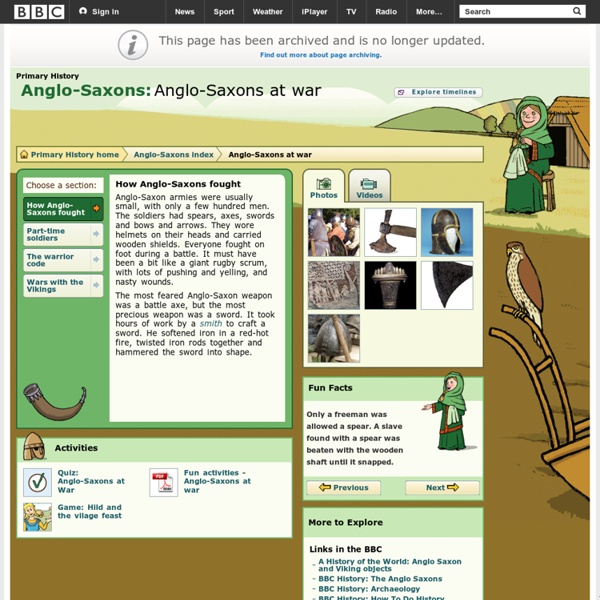



Primary History - Anglo-Saxons - Anglo-Saxon life Life in Anglo-Saxon England 1. Introduction The Anglo-Saxon period lasted for some six centuries, from the arrival of Germanic invaders from the continent during the early fifth century AD to the Norman Conquest of 1066. 2. Anglo-Saxon kings were prolific legislators, and a number of law-codes survive from the seventh to eleventh centuries. 3. Life was more dangerous in Anglo-Saxon England than in modern times; and in addition to the hazards of war, feud, and capital punishment, Anglo-Saxons could be at risk from famine and epidemics, as well as from a range of endemic diseases including degenerative arthritis, leprosy and tuberculosis. 4. A substantial literature survives from Anglo-Saxon England in both Latin and Old English. Other original writings in Old English include sermons, saints’ lives and wills. About 30,000 lines of Old English poetry survive, representing a range of genres including elegies, heroic verse, love poetry, dream vision, narrative, religious poetry and riddles. 5. 6. 7. Further Reading
Ashmolean Museum: Anglo-Saxon Discovery - Beliefs When did the Anglo-Saxons become christians? When the Romans left, just after AD400, there were still some christians in Britain, but when the Anglo-Saxons arrived most people appear to have become pagans. Archaeologists can tell this from the types of burials, since pagans buried people with their possessions but christians did not. The christian church in Rome sent a monk called Augustine to England in AD597 to convert the Anglo-Saxons to christianity. At the same time, in the north of Britiain, christian monks arrived from Ireland and converted the Picts in Scotland and the Anglo-Saxons in Northumbria. Graduallly more and more Anglo-Saxons became christians until christianity replaced paganism altogether. The christians built churches and founded monasteries all over the country. Are there any Anglo-Saxon churches where you live? Find out more about Anglo-Saxon churches
Primary History - Anglo-Saxons - Anglo-Saxon beliefs Anglo-Saxon Instruments - English Historical Fiction ... by Richard Denning We have a pretty good idea of what musical instruments the Anglo-Saxons used. The Cotton collection in the British Museum includes the top image showing a Saxon king playing a harp with a horn player, an early trumpet and a rebec (a early violin type instrument). I now own four replica instruments based on Anglo-Saxon originals so I thought I would show them today. First I have the Horn. Next up is the bone flute. Drums were certainly used. Finally here is my lyre. This is the original Sutton Hoo Lyre in the British Museum: Here is a video of me playing (badly) these instruments. --------------------------------------------------------------- Richard Denning is an author of historical fiction.
Anglo-Saxon clothes - men | Tha Engliscan Gesithas 5th and 6th centuries Men wore wool or linen hip-length undershirts with long sleeves, and probably loin-cloths. Woollen trousers were held up with a belt threaded through loops. A tunic was pulled over the head, and reached down to the knees. It was usually decorated at the wrists, neck and hem, and was long-sleeved. A belt was worn at the waist, often with a decorated buckle and strap-end. 7th to 11th centuries Tunics tended to have extra pleats inserted at the front, and sleeves became fairly tight-fitting between elbow and wrist. There was undoubtedly much variation according to region, period and status. Most clothes were made at home, and would almost certainly have undergone many repairs, or have been handed down, before being eventually cut up for rags or thrown away. Underclothes were not usually dyed, but left in their natural colour, or perhaps sun-bleached.